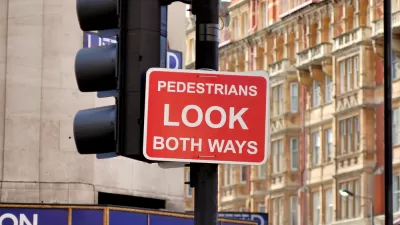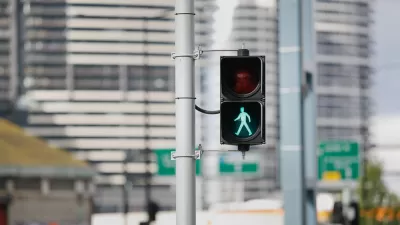Two articles in national publications share findings from recent studies that make it harder to accept the "distracted walking" excuse for increased traffic fatalities.

Christie Aschwanden writes for FiveThirtyEight about the growing body of research showing mobile phones to be much more thoroughly dangerous distractions than most people are ready to admit.
Research has found that when it comes to distracted driving, what your eyes and hands are doing is only part of the issue — what your mind is doing is at least as crucial. Before you can reduce the risks of cellphone use while driving, you need to understand the nature of distraction itself.
According to Aschwanden, most vehicle codes have countered distracted driving by attempting to ensure that drivers have their hands on the wheel and their eyes on the road. That doesn't account for the third leg of the attentive driving stool—keeping your mind on the task.
But putting down the phone and talking only via a hands-free system in the car doesn’t necessarily solve the distraction problem, said David Strayer, a psychologist at the University of Utah. Strayer’s research has found that drivers can get a sort of “tunnel vision” when their minds are focused elsewhere. People can enter this state during a phone conversation, whether or not they’re holding a phone, Strayer said.
In another article, Alissa Walker writes from research from the pedestrian side of the equation. It's no secret that "distracted walking" sometimes gets a lot of heat from public service campaigns and the every day ire of commuters. However, a study by a group of Northern Arizona University engineering professors, published recently in Transportation Research Record, reveals "that a large majority of pedestrians—86.5 percent—did not exhibit 'distracted' behavior," according to Walker.
What’s more, a majority of pedestrians, distracted or not, did not commit violations which might make a crash more likely. Only 16 percent of all walkers traveled outside the crosswalk and 23 percent crossed in the absence of a “Walk” signal, either while “Don’t Walk” was illuminated or flashing a countdown (which people can get ticketed for in some cities).
Walker also notes another study by the Center for Disease Control finding that "31 percent of U.S. drivers said they’d texted while driving in the past 30 days (since that’s a self-reported figure, it may be low), and many, many studies have shown how much phone use while driving can slow reaction time. Texting while driving has been said to be as dangerous as driving drunk, and phones can distract even if drivers don’t use them."
For additional follow-up reading on how communities can begin to prioritize the safety and convenience of pedestrians over the convenience of drivers, Walker also recommends an article by David Levinson on the subject of pedestrian signaling.
FULL STORY: Driving? Your Phone Is A Distraction Even If You Aren’t Looking At It

Maui's Vacation Rental Debate Turns Ugly
Verbal attacks, misinformation campaigns and fistfights plague a high-stakes debate to convert thousands of vacation rentals into long-term housing.

Planetizen Federal Action Tracker
A weekly monitor of how Trump’s orders and actions are impacting planners and planning in America.

In Urban Planning, AI Prompting Could be the New Design Thinking
Creativity has long been key to great urban design. What if we see AI as our new creative partner?

King County Supportive Housing Program Offers Hope for Unhoused Residents
The county is taking a ‘Housing First’ approach that prioritizes getting people into housing, then offering wraparound supportive services.

Researchers Use AI to Get Clearer Picture of US Housing
Analysts are using artificial intelligence to supercharge their research by allowing them to comb through data faster. Though these AI tools can be error prone, they save time and housing researchers are optimistic about the future.

Making Shared Micromobility More Inclusive
Cities and shared mobility system operators can do more to include people with disabilities in planning and operations, per a new report.
Urban Design for Planners 1: Software Tools
This six-course series explores essential urban design concepts using open source software and equips planners with the tools they need to participate fully in the urban design process.
Planning for Universal Design
Learn the tools for implementing Universal Design in planning regulations.
planning NEXT
Appalachian Highlands Housing Partners
Gallatin County Department of Planning & Community Development
Mpact (founded as Rail~Volution)
City of Camden Redevelopment Agency
City of Astoria
City of Portland
City of Laramie





























